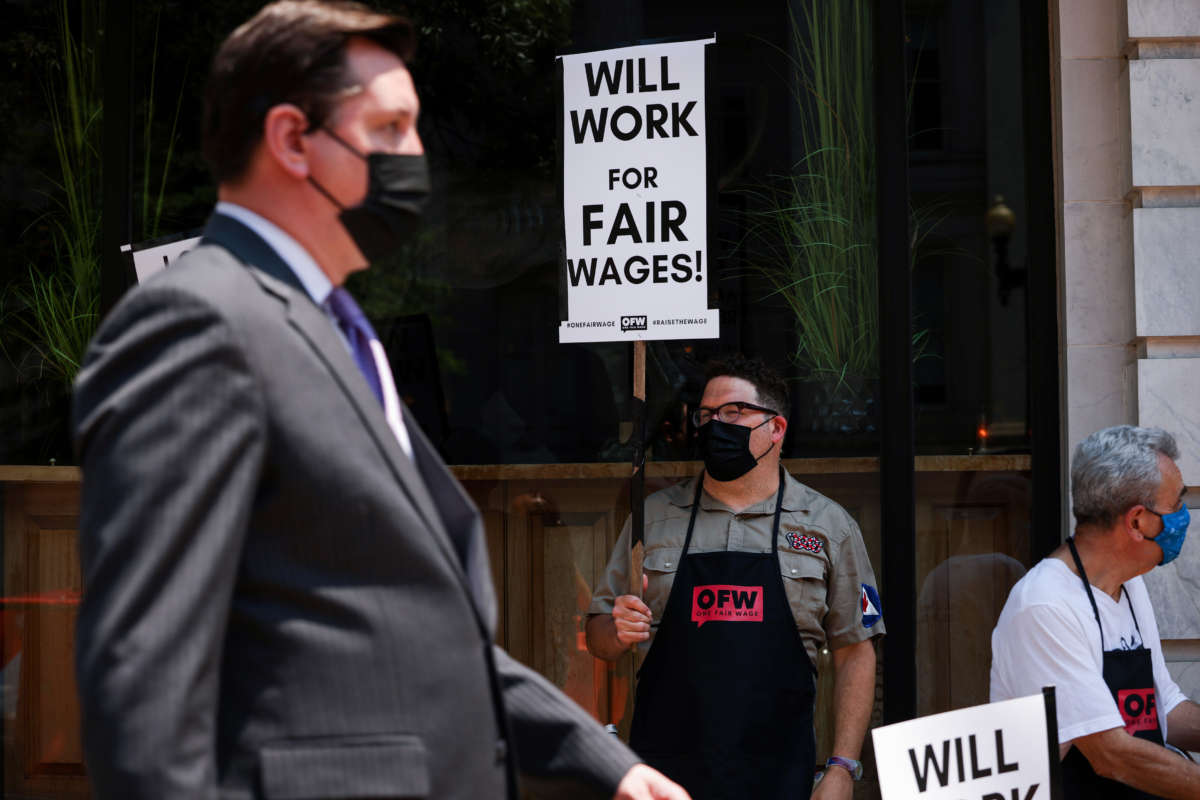As inaction in Congress extends the longest period in U.S. history without a raise in the federal minimum wage, the value of the minimum wage has reached its lowest point since the mid-20th century.
A report by the Economic Policy Institute (EPI) released last week finds that since the $7.25 an hour wage was established in 2009, its real value has declined 27 percent, bringing the value of the federal minimum wage to its lowest point in 66 years.
Further, the value of the minimum wage is 40 percent lower when compared to its highest historical value of about $12.12 in 1968 after adjustment for inflation. Prior to the late 1960s, however, some workers in industries with disproportionately large representations of Black workers made less than the federal minimum wage, EPI notes.
The last time that the federal minimum wage was lower than its current value was in 1956, when it was worth $7.19 in 2022 dollars. If conservative lawmakers continue to obstruct federal minimum wage raises, the value of the minimum wage could soon fall below 1956 levels.
The minimum wage hasn’t been raised in 13 years. Efforts by progressive lawmakers like Sen. Bernie Sanders (I-Vermont) last year to raise the minimum wage to $15 an hour were blocked by Republicans and conservative Democratic Senators Joe Manchin (West Virginia) and Kyrsten Sinema (Arizona).
Workers say that $7.25 is far from enough to survive. It is not a living wage in any state in the U.S., according to the MIT living wage calculator. In fact, even a $15 minimum wage, which some states and cities have adopted, is not an adequate living wage in any state, according to an analysis done last year. The MIT living wage calculator has found that, for instance, a single mother with two children making the federal minimum wage would need to work 235 hours a week – more hours than exist in a week – in order to make a livable wage.
Indeed, though fast food and other service workers have been waging a campaign to raise the minimum wage to $15 an hour, even that number – over twice the federal minimum wage – is now only worth the equivalent of $11.65 in 2012 dollars, which is the year that Fight for $15 began.
Economists say that, if the minimum wage were raised in proportion to the productivity gains over the decades, the federal minimum wage would be $31.67 an hour. If it were raised alongside Wall Street executive bonuses since 1985, it would be $44.12.
According to EPI, 30 states and dozens of cities and counties have a minimum wage higher than the federal minimum wage; meaning that the federal minimum wage still stands in 20 states, largely in the South.
Meanwhile, some states are pursuing a higher minimum wage in order to come closer to the cost of living in those states. In Hawaii, where a living wage for an adult with zero children is calculated to be $21.99, lawmakers have passed legislation that would raise the minimum wage to $18 an hour by 2028. In California, where an adult with no children needs to make $21.82 to survive, voters will decide on a ballot measure that could raise the state minimum wage to $18.
Raising the minimum wage to $15 an hour by 2025, EPI found in a report last year, would raise the pay of 32 million workers – or over a fifth of the entire U.S. workforce. On average, workers would see a pay increase of $3,300 a year.
“A national $15 minimum wage would raise the incomes of tens of millions of workers, including servers in restaurants, grocery store employees, and essential health care workers,” EPI wrote last week. “Although the Biden-Harris administration recently raised the minimum wage to $15 per hour for federal contractors, it is past time to raise the minimum wage for all workers.”
Join us in defending the truth before it’s too late
The future of independent journalism is uncertain, and the consequences of losing it are too grave to ignore. To ensure Truthout remains safe, strong, and free, we need to raise $27,000 in the next 24 hours. Every dollar raised goes directly toward the costs of producing news you can trust.
Please give what you can — because by supporting us with a tax-deductible donation, you’re not just preserving a source of news, you’re helping to safeguard what’s left of our democracy.
